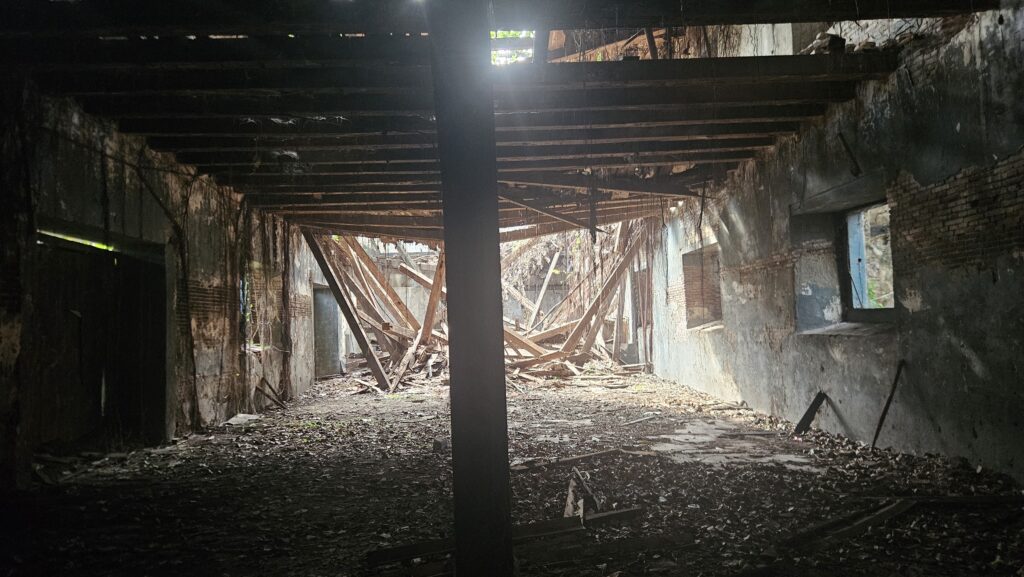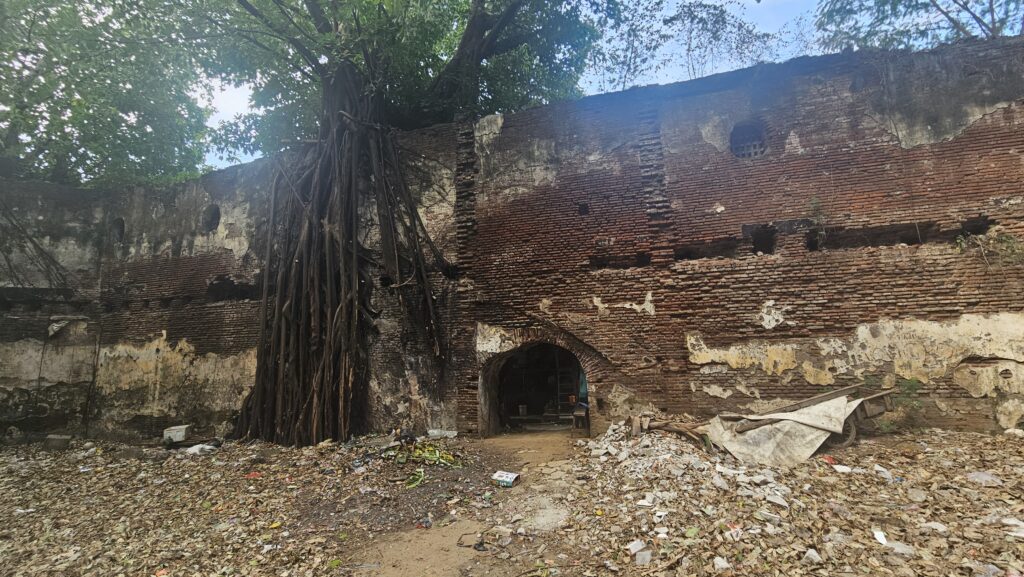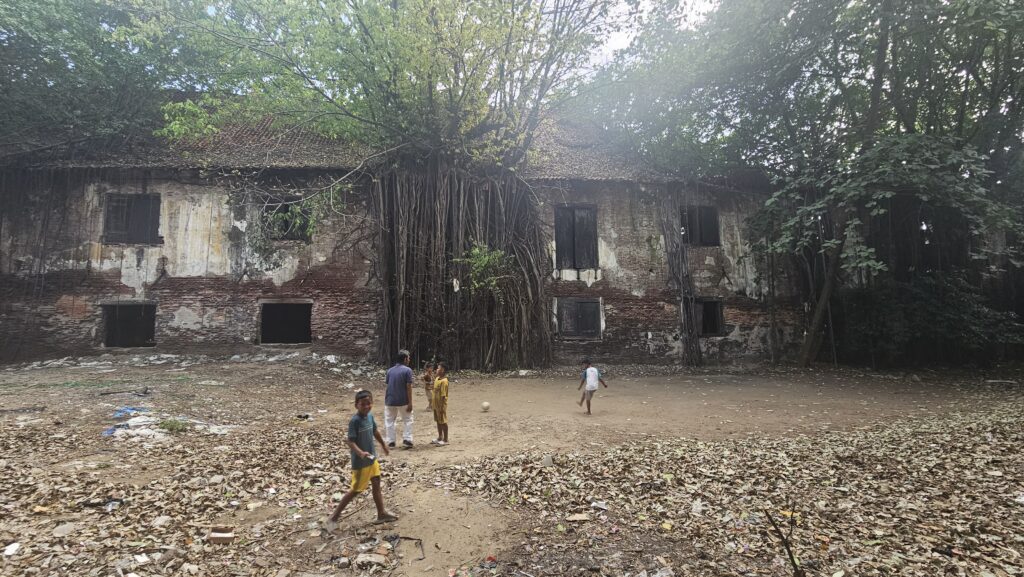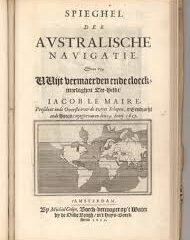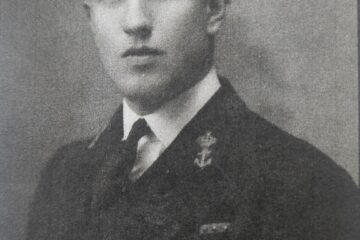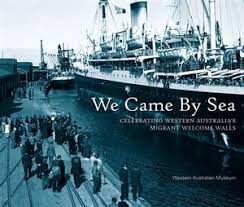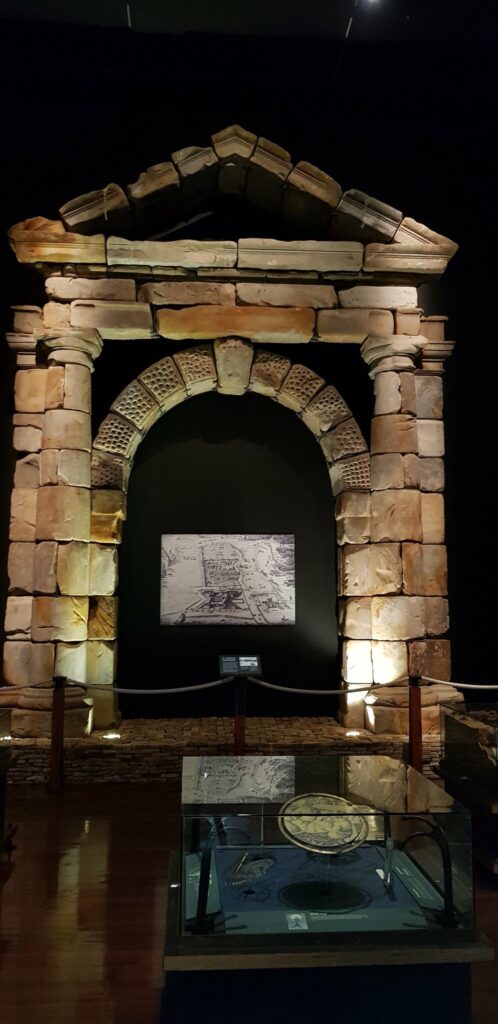
Kasteel Batavia stood as the administrative heart of the Dutch East Indies, begun in 1619 under Jan Pieterszoon Coen. The rectangular fortress, built on the western bank of the Groote Rivier (now Kali Besar), featured four bastions—Amsterdam, Zeelandia, Hollandia and Westfriesland—connected by thick walls enclosing offices, warehouses, and the Governor-General’s residence. The Waterpoort on the north wall faced the river and the harbour beyond, serving as the main maritime gateway for arriving VOC ships. The fortress not only projected Dutch power but also shaped the urban structure of Batavia for more than a century.
By the late eighteenth century, the castle was dismantled as the city expanded southward, leaving still significant ruined fragments in modern Jakarta. The sandstone blocks carried aboard the Batavia remain the most tangible link between the Dutch colonial capital and the ill-fated voyage that ended on the Australian coast.
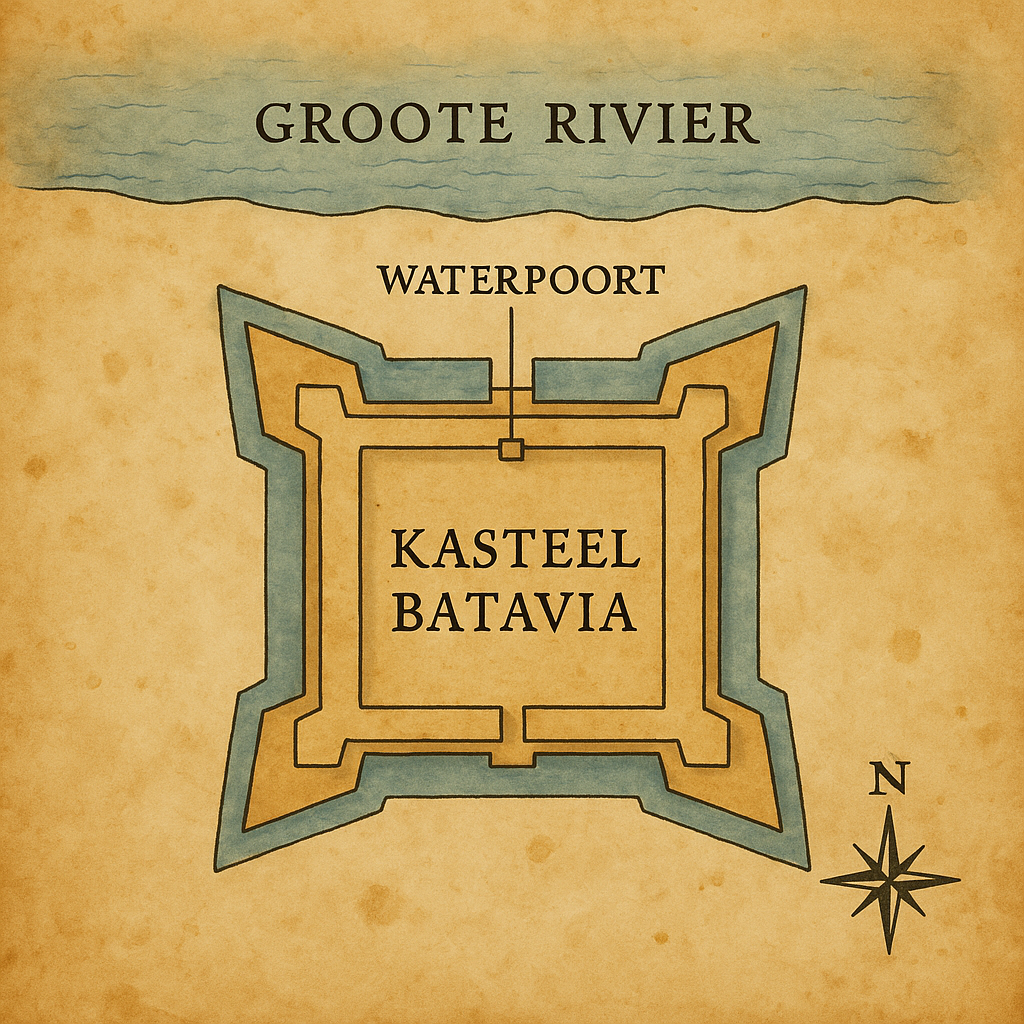
In October 2025, I visited the site of the old fortress, walking through the remnants of what was once Bastion Amsterdam, where parts of this bastion are still standing there, surrounded by the bustle of Jakarta’s, it was striking to imagine the monumental Waterpoort that never rose—its stones now half a world away in Geraldton, the two places forever connected by the same shipwrecked story. Below several photographs from the only remaining remnants of the caste to illustrate these surviving traces of Kasteel Batavia’s enduring legacy.
.
